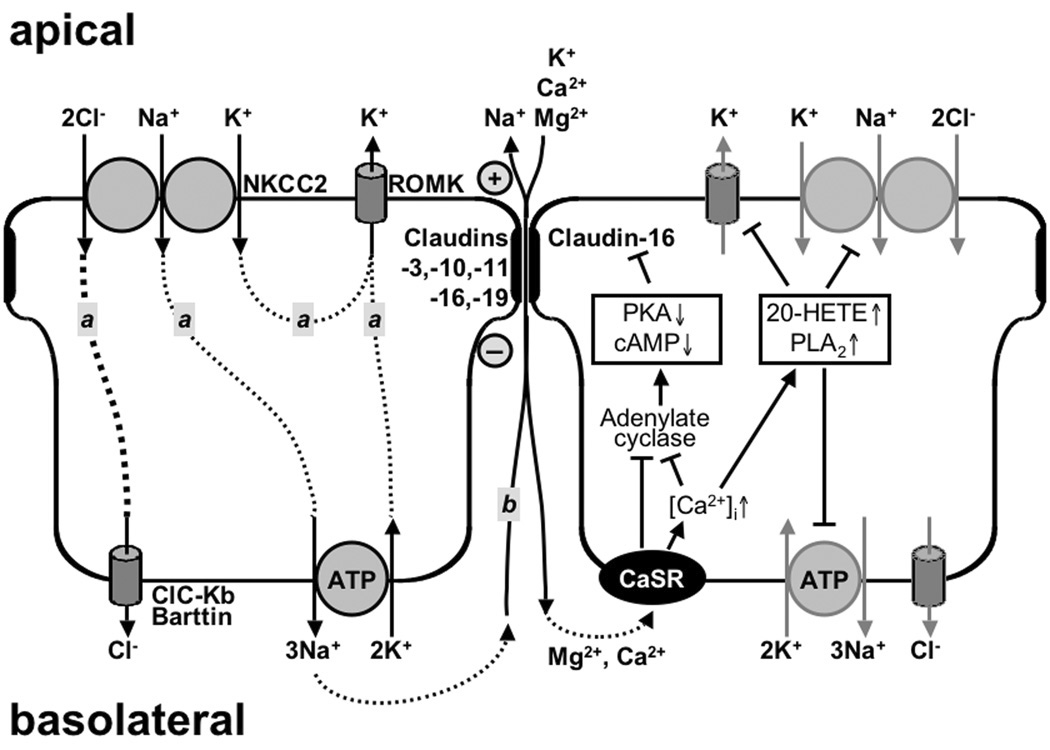Figure 2.
Transport systems involved in the generation of the driving force for paracellular divalent cation resorption in the TAL. Left: Two components are contributing to the lumen positive, transepithelial potential. Component “a” consists of NKCC2 (Na+-K+-2Cl−-symport, affected in Bartter type I), ROMK (apical potassium channel, affected in Bartter type II), ClC-Kb (basolateral Cl− channel, affected in Bartter type III) with its subunit barttin (affected in Bartter type IV). Component “b” is a Na+ diffusion potential due to a paracellular back-leak of Na+. Right: Mechanisms by which CaSR (Ca2+-sensing receptor), may modulate paracellular divalent cation transport either by affecting the transepithelial potential (inhibition of NKCC2, ROMK and Na+/K+-ATPase through a Ca2+ and PLA2-dependent increase in 20-HETE) and/or through a cAMP-dependent PKA-effect on claudin-16 as proposed by Ikari et al. [41].

